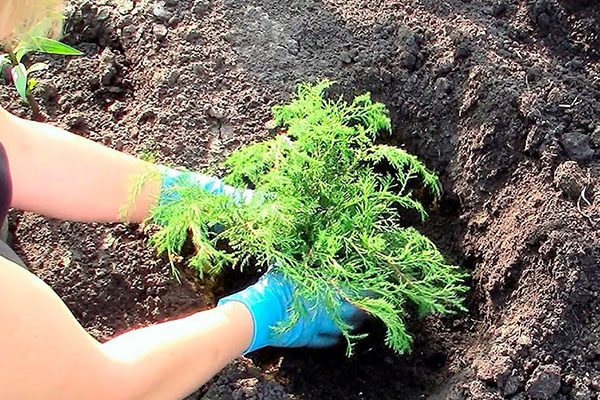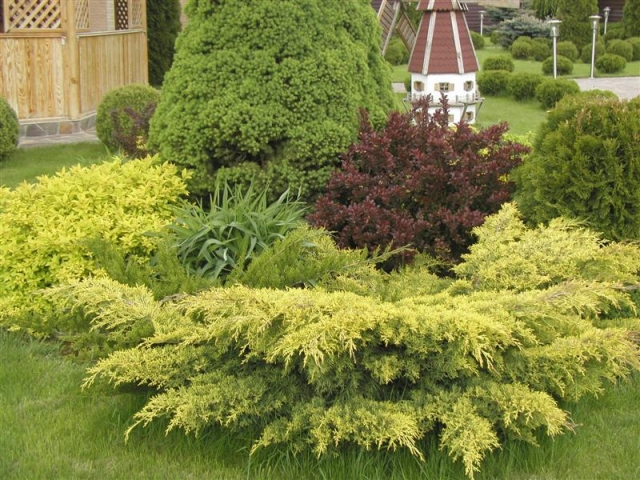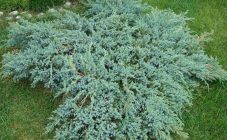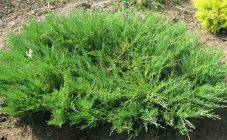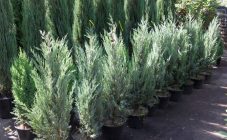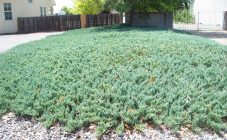Juniper Gold Star, or Gold Star, is a chic representative of low-growing coniferous evergreen shrubs, the Cypress family. The spreading crown of the bush develops in the shape of a star. Ephedra growth is slow - no more than 10 cm per year. The plant cleans and disinfects the air. It stands out for its high decorative properties, ease of maintenance. Essential oils produced by pine needles are very useful for colds and infectious diseases.
Characteristics of the variety
Juniper Chinese Gold Star is a medium juniper - a hybrid of common and Cossack junipers, it is resistant to negative weather conditions. All Gold junipers are exceptionally stunted shrubs.
Description of appearance:
- ¾ height - up to 1 m (in most cases it does not exceed 0.6 m);
- ¾ crown - diameter up to 2.5 m (on average, horizontal shoots grow up to 1 m);
- ¾ needles - needle or scaly (there are often facts of two types of needles staying simultaneously on the same bush);
- ¾ color - the central shoots are green, spreading - yellow-green.
Planting a plant
Junipers are grown from seeds, but since this business is quite long in time, most gardeners prefer to buy young bushes from local nurseries.
When planted with seeds, the first shoots appear only for 1-3 years. Before sowing, the seed is stratified (a month at a temperature of 20-30 ° C, then 4 months at 15 degrees). In the spring, the seeds are cleared of pericarp and scarified (harms the hard cover, partially). Before planting juniper seeds of middle Gold stara, it is proposed to add soil from juniper crops to the planting holes to spread mycorrhiza.
In most situations, juniper propagation is chosen by spring cuttings, the cutting of which is performed before the buds begin to bloom, or immediately on the eve of this process. It is extremely important to keep the heel. To start the process of root formation, the cuttings are provided with greenhouse conditions (22 degrees Celsius). They are transplanted into open ground after a year or two.
Planting can be carried out both in spring and autumn, it is advisable to plant junipers in the spring, when the danger of recurrent frosts has passed. Autumn planting does not guarantee that the young bush will take root until frost and survive winter weather conditions.
The site is chosen sunny, perhaps a slight darkening. It is not picky about the composition of the soil, but it is better cultivated on light, well-drained soils. Prefers soils with a slightly acidic or neutral reaction (from 4.5 to 7 pH). Juniper Medium Gold Star reacts negatively to harmful factors: the proximity of the roadway, chemical emissions from industrial enterprises, factories. The proximity of groundwater is detrimental to the plant.
A distance of at least 2 m is observed between the plants. The planting hole is pulled out 0.7 m deep, in width - depending on the root system of the plant (2 times larger than the earthen coma). It is imperative not to damage the root system. At the bottom of the pit, a drainage layer (up to 20 cm) is laid with sand or broken brick. The root collar is not buried.
Reproduction by layering:
- choose a healthy young shoot;
- bend the selected shoot to the ground;
- fix the place of the deflection, add ground to the layering;
- in the next year, the cuttings will release roots, and it will be possible to transplant it.
Plant care
Caring for ephedra is quite simple, it does not require any skills.
The plant is drought-resistant, but the first 2-3 years after planting it needs constant watering. For an adult ephedra, 2-3 abundant watering (10-30 liters at a time) per season is enough, in the evening it is advisable to spray, since the plant does not withstand dry air well.
After watering, shallow loosening is carried out, extremely carefully, since the roots are of a surface type. To preserve soil moisture, it is recommended to mulch the near-trunk circle with mown grass, sawdust or peat.
The variety is distinguished by high winter hardiness, but it is better to cover young bushes for the first two years with spruce branches or dry foliage. In early February, to prevent sunburn, the plant is covered with burlap.
Sanitary pruning is carried out in the spring, removing dead, diseased and weak branches. Aesthetic pruning, or molding, is well tolerated by the juniper, allows you to give the shrub any desired shape. You can cut it throughout the year, it is not recommended to cut it too much, since the shrub is already growing slowly.
Top dressing is carried out only with the use of nitrogen or complex fertilizers, no more than once in the spring (April, May). It is allowed to increase the dose and rate for old plants.
It is useful to scatter fertilizers with Me (trace elements) near the trunk circle of the juniper ordinary Gold.
Diseases and pests
In most cases, diseases and pests on the plant are the result of improper agricultural practices. Juniper is susceptible to:
- ¾ aphids;
- ¾ spider mite;
- ¾ scabbard juniper;
- ¾ juniper miner moth;
- ¾ angle-winged pine moth;
- ¾ gall midge;
- ¾ ants;
- ¾ rust.
It is possible to rid the Goldstar juniper of insects with the help of insecticides. For prevention, it is necessary to regularly weed a bed with shrubs and carry out chemical spraying.
Diseases include:
- ¾ fusarium;
- ¾ reddening of the needles;
- ¾ shute brown;
- ¾ alternaria;
- ¾ rust;
- ¾ biorella cancer;
- ¾ nectriosis of the bark.
Diseases are caused by pathogenic fungi, in order to prevent waterlogging of the soil.
Landscape
Juniper Chinese Goldstar is used to decorate small backyard rocky gardens. The shrub goes well with heathers, eriks and pines, ideal compositions are obtained with the addition of roses and cereals. It is not recommended to grow junipers near tall, spreading trees, as they will start to wither in the shade.
Looks great both in single and in mass plantings, as a ground cover plant. It is used to decorate slopes and hills. In landscape design, juniper successfully fits into styles that are associated with naturalness, space and geometry.
Juniper Golden Star occupies a special role among conifers due to its attractive appearance and unique beneficial properties, proper care of it will allow you to enjoy its aroma and beauty for many years.

